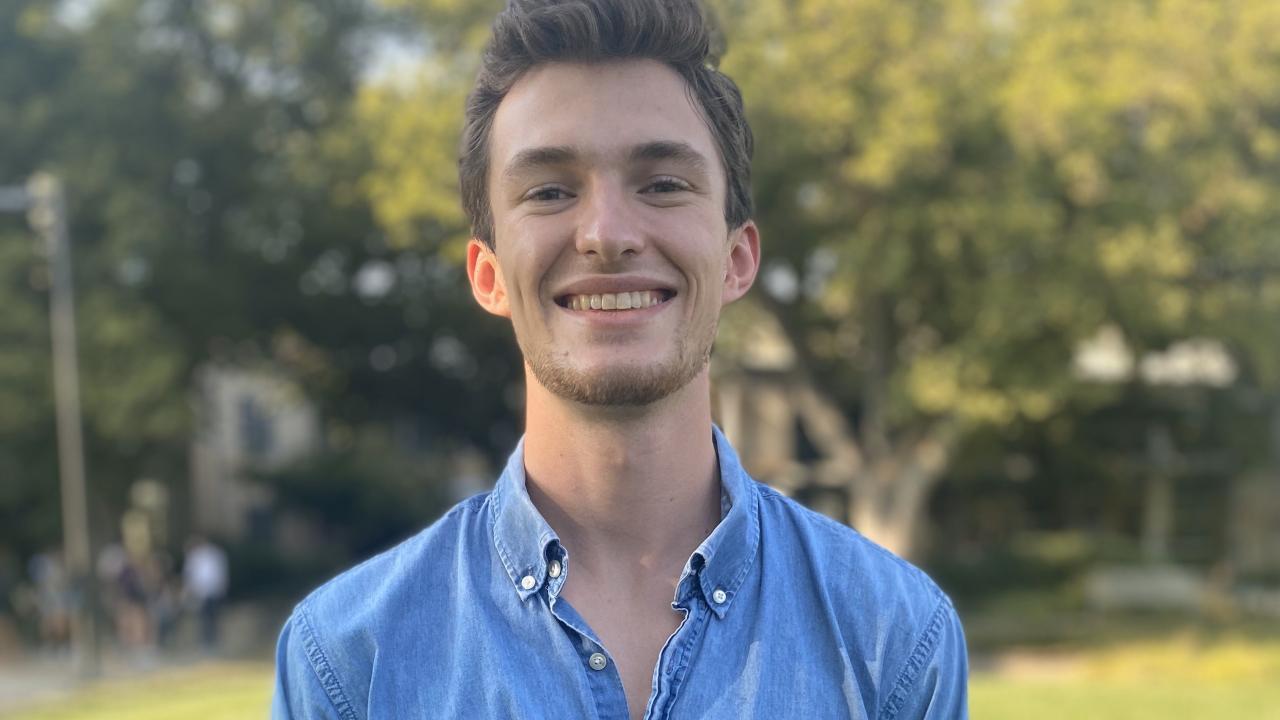
Alumni Spotlight- Cole Jenson
Currently I work for the Rural Voices for Conservation Coalition as a program analyst. I'm from North Carolina, and my wife Meade and I are living in Bozeman, Montana. I spend a good bit of my time biking, hunting, hiking, skiing, or singing at open mics depending on the season/weather.
I made my way into environmental policy and management through a very winding path that included Neuroscience, public health, music, and arts administration. The throughline here is a desire for positive impact, either through solutions to existing issues (neuroscience and public health) or the amplification of sources of wonder in our lives (music and arts administration). Learning about the importance of crop soil microbiomes for neurodegenerative disease prevention as well as some first hand experience with the earlier effects of climate change in the Bering Strait sold me on the need for climate and environmental work. Pretty soon I was hooked on the potential of environmental work to produce a lot of the same benefits as all of the other fields I had worked in combined.
What interested you about the EPM program?
I was drawn to EPM mainly by the flexibility to focus on deepening my knowledge base and gaining professional skills and relationships through professional projects, rather than the research-heavy model that most other programs are structured around. I was also pretty excited about the broad access to one of the most important hubs of environmental and climate policy in the country.
What types of professional experiences did you seek out while you were in the program?
During the program I focused on the opportunities unique to the California Capitol context, such as access to state agencies. Through a fellowship and my practicum project I was able to spend significant time with the Regional Forest and Fire Capacity Program and Conservation and Housing Educational Workshop Series teams within the CA Department of Conservation. I also taught phylogeny labs to brush up on my biology and ecology while paying tuition.
Can you talk a bit about your Policy Clinic capstone project? What did the project entail, who did you work with, why was it important?
The Policy Clinic was one of the most impactful parts of the program for me. The all-star student team included Christina Harrington, Maria Rechdouni, Sarah Adler, and Thomas Miller, and our client organizations included the EPA's Region 9 Brownfields team, the Watershed Research and Training Center, and the CA Governor's Office of Business and Redevelopment. It was awesome to see breadth of perspectives, goals, and experiences across federal, state, and local scales that they brought.
The project centered around the revitalization of former sawmill sites in order to increase rural community vitality and wood utilization capacity (thus wildfire resilience). In order to facilitate this, our team was tasked with creating a process to analyze a database of all of the closed sawmill sites across the state in order to prioritize a subset of them for redevelopment into new wood utilization infrastructure. With very helpful input from our clients, we came up with a two phase process including GIS analysis, a weighted prioritization matrix tool, and a whole lot of stakeholder engagement, as well as policy and funding analysis. We got to learn a lot from each other about these types of work, and from our professor and clients about project management, conflict resolution, and team decision making.
I was most involved in the stakeholder engagement and the development of the weighted prioritization matrix, and while I definitely learned a lot about how to conduct those types of work more professionally, the connections I made and the things I learned about rural communities' relationships to environmental work really stole the show. Those lessons and connections have really defined my professional direction.
What were your biggest takeaways from the Clinic?
1) taking the time to communicate clearly and make sure you've addressed any objections is more valuable than getting a head start on technical tasks, and at times even than making a deadline. 2) The opposition in our policies and culture between our non-built environments and the rural communities and economies that are most closely tied to them is artificial, and it is essential to reverse in order to improve environmental and climate outcomes.
How did the Clinic set you up for the work that you currently do?
The most immediate impact was that I went directly to work for one of our clients after graduating. Laurel Harkness helped to develop our team's project from GOBiz and stayed very involved despite migrating to a nonprofit called the Rural Voices for Conservation Coalition, where I now work. Less visible but even more impactful: the connections, project management skills, and familiarity with technical subject matter that I gained through this project are invaluable to the work I'm doing, and getting to put them to use in a real-world context was better than any answer I could ever give to an interview question.
